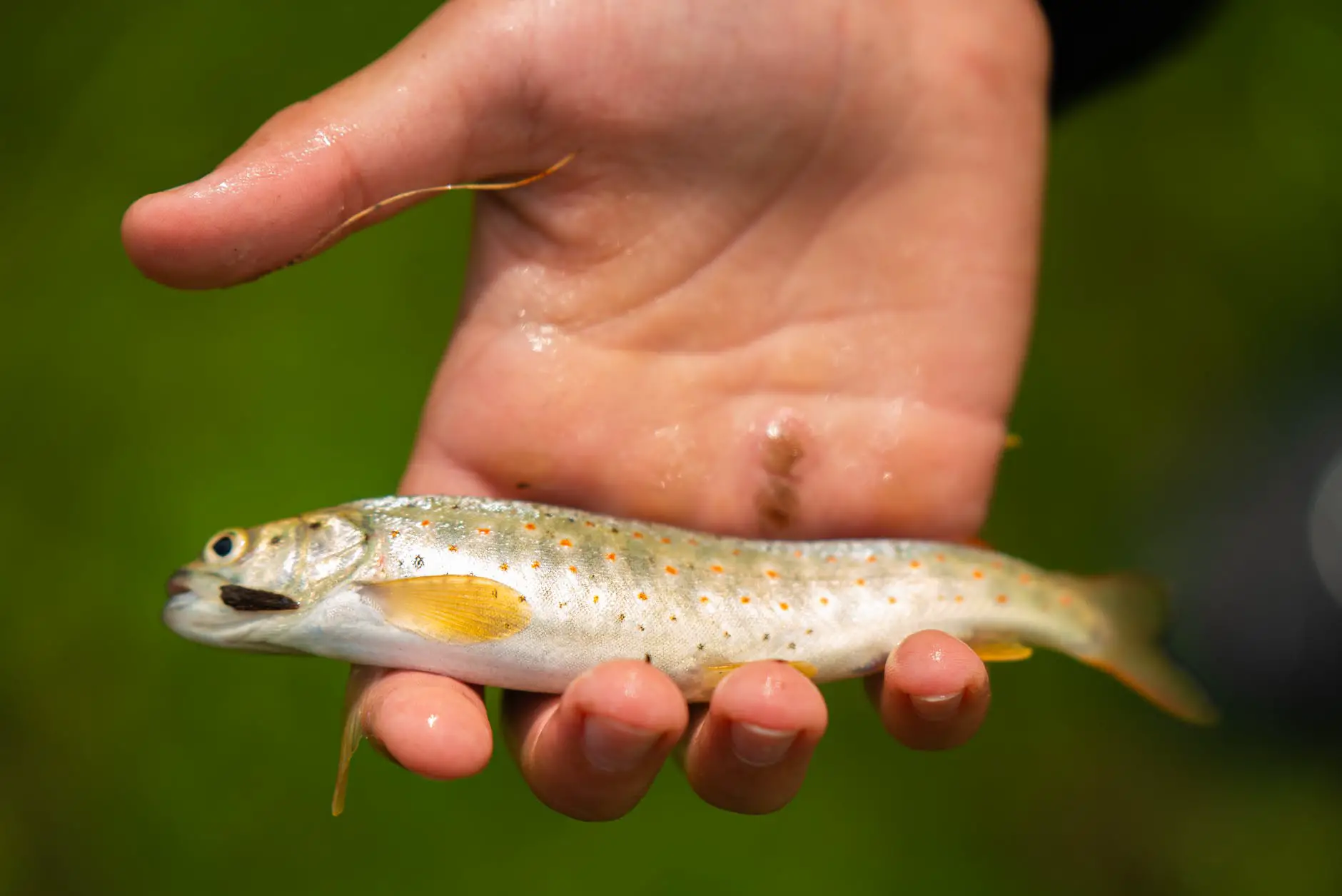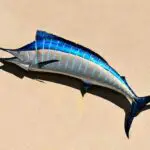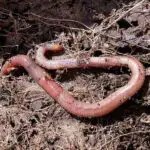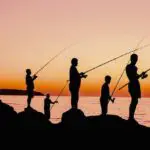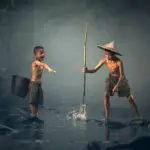Yes, crappie do bite in the rain. However, before you get too excited and head out to the lake, keep one thing in mind: you can absolutely catch crappie in the rain.
That’s right – even though it may not be ideal weather conditions, you can still have a successful day out on the water if you target crappie.
1. What is the best time to fish for crappie?
There are a few different things to consider when trying to determine the best time to fish for crappie. First, you need to think about what type of crappie you are hoping to catch. Black crappie and white crappie tend to bite at different times of day, so knowing which one you want will help narrow down the best time for you to fish.
In general, both black and white crappie seem to bite best just after sunrise and an hour before sunset during warmer months. This is likely because the water is cooler at these times of day, making the fish more active. Nighttime can also be a good time for fishing during warmer months, although it can be harder to see your line and bait in the dark.
During colder months, midday tends to be the best time for fishing for both black and white crappie. This is because the air temperature is warmest during this time of day, causing the water temperature to rise slightly as well. Warmer water makes fish more active, so they are more likely to bite during this time period.
2. Does the weather affect when crappie bite?
The answer to whether weather affects when crappie bite is a bit complicated. There are many factors that can affect fish biting, including water temperature, barometric pressure, and the amount of light. All of these factors can be affected by weather changes.
For example, a sudden drop in barometric pressure can signal an approaching storm system, which can cause fish to become more active as they sense the change in conditions. Conversely, high pressure systems typically mean stable conditions, which can make fish less active and less likely to bite. Water temperature is also a major factor – as water gets colder, fish become less active and may not bite as often. However, if there is a warm front moving through, it could raise water temperatures enough to trigger more activity from the fish.
So does this mean that you should never go fishing during bad weather? Not necessarily – there are definitely times when changing conditions can actually make the fishing better. If you know that a cold front is coming through but the current conditions are still good, you might have a window of opportunity where the fish are actively feeding before the front hits and water temperatures start to drop. Similarly, after a period of stable high pressure ,a sudden drop in pressure could signify an approaching low pressure system with potential for better fishing conditions down the road. The key is to pay attention to all of the different meteorological factors at play and use your best judgement to decide whether or not going out fishing is worth it given the current conditions.
3. What are the ideal conditions for fishing for crappie?
The ideal conditions for fishing for crappie depend on a few factors. First, you need to consider the time of year. The Crappie Spawn happens every spring when the water temperatures reach above the 60-degrees. Depending on where you live, the crappie spawn can be anytime from early March to the middle of May. During this time, crappie will build spawning nests in shallow water generally ranging between 1-6 feet of water.
Second, you need to consider what type of bait or lure you will use. Minnows are a popular choice among anglers, but jigs and crankbaits can also be effective. It is important to choose a bait that is small enough to mimic the size of crappie’s natural prey.
Finally, you need to consider where you will fish for crappie. They tend to congregate aroundCover near drop-offss and underwater structure like logs or brush piles where they can ambush their prey. Look for areas with these features and try fishing along them until you find where the fish are biting.
4. How can you tell if a crappie is biting?
If you’re fishing for crappie, there are a few things to look for to tell if they’re biting. First, you’ll want to pay attention to your line. If it’s tight and moving, that’s a good sign that a fish is on the other end. You might also see the tip of your rod moving or feel a vibration in the handle.
Another way to tell if crappie are biting is by watching the water around your bait or lure. If you see ripples or movement, that means something is going on beneath the surface. Crappie will also sometimes hit the water with their tails when they’re feeding, so keep an eye out for splashing.
Listening can also be helpful in determining whether or not crappie are biting. If you hear odd noises coming from your line or reel, it’s likely because a fish has taken the bait and is swimming away with it.
Ultimately, the best way to know for sure if crappie are biting is by paying close attention to your pole and line and being observant of activity in the water around you.
5. What bait works best for catching crappie?
When it comes to fishing for crappie, there is no one-size-fits-all answer when it comes to the best bait. The type of bait that works best can vary depending on the time of year, the location, and the specific fish you are targeting. However, there are a few general tips that can help you choose the best bait for catching crappie.
One tip is to use live bait whenever possible. Crappie are attracted to movement, so using a live worm or minnow will often be more effective than using artificial lures. Another tip is to use bright colors when choosing your bait. Crappie are attracted to brightness, so using colorful lures or baits can increase your chances of success.
In terms of specific baits, minnows and worms are always good options. Other popular choices include jigs, crankbaits, and spinnerbaits. It really depends on what the fish are biting at any given time though, so it’s important to experiment until you find what works best in your particular situation.
6. How do you properly set the hook when Crappie fishing?
There are a few things to keep in mind when setting the hook while Crappie fishing. First, you want to make sure that your rod and reel are properly matched. A light action rod with eight-pound test line is generally a good choice for Crappie fishing. Second, you want to use a small hook – size 8 or 10 is usually about right. Third, you need to be patient when setting the hook – wait until the fish has fully swallowed the bait before striking.
7. Where do Crappie typically bite?
The best spring crappie fishing usually occurs when the water temperature is in the high 50s to low 70s. Since crappie often relate to structure, every boat dock, stump, fallen tree, weedbed and rockpile has the potential to hold them.
During the day, they will frequently suspend near drop-offs adjacent to deep water or around any type of submerged brush. At night, they’ll move shallower and can be found close to shore around lights or other types of shallow cover. Because they are attracted to light, many anglers will use a small flashlight when fishing for them at night.
Interestingly enough, studies have shown that different color jigs produce more bites from Crappie at different times of day. In general, lighter colors like white are better during the daytime while darker colors like black work better at night. However, there really is no definitive answer and ultimately it’s up to the angler to experiment with different colors and see what works best for them.
8. Do fish still bite in the rain ?
It’s a common question among anglers: does the rain really affect fishing? The answer, as with most things in fishing, is that it depends. Let’s take a closer look at what factors might be at play when it rains and see if we can’t come to a better understanding of how best to approach our fishing in wet weather.
First, let’s dispel the myth that fish bite more when it rains simply because they’re trying to escape the downpour. Fish don’t have lungs and therefore aren’t affected by drowning in the same way that humans are. They do need oxygen to survive, but they get this from the water itself through their gills. So unless there’s some other factor at play, the rain isn’t going to trigger a feeding frenzy out of fear for their lives.
So what else could be going on? Well, one possibility is that rainfall can actually increase the amount of dissolved oxygen in the water. This is especially true if there hasn’t been much rain lately and the water has been stagnant – fresh precipitation can give the whole system a much-needed boost of oxygenated water. This could make fish more active and more likely to feed. Another possibility is that rainfall can change the temperature of surface waters, making them either warmer or cooler depending on whether cold or warm air is being brought down from above. These changes in temperature can also affect fish activity levels and make them more inclined to feed.
Of course, there are other factors besides weather that can affect fish biting behavior – things like moon phase, time of day, barometric pressure, etc., all play a role in how active (or inactive) fish will be on any given day.
9 .What should you do if it starts raining while you’re fishing for Crappies?
If you’re fishing for Crappies and it starts raining, there are a few things you can do to adjust your strategy and still have a successful day.
First, if the rain is light, you can continue fishing as usual. However, if the rain is coming down harder, you’ll want to consider moving to a sheltered spot. This could be under some trees or in a boat house. If you don’t have access to shelter, try angling your body so that the rain isn’t hitting you directly in the face.
Second, when it’s raining, Crappies will often move into shallower water near the shoreline. So, if you were fishing in deeper water before the rain started, now is a good time to move closer to shore. You may also want to try using lighter tackle since Crappies are more likely to bite when they’re feeling insecure due to bad weather conditions.
Lastly, remember that wet weather can make fish more active than usual so don’t be afraid to experiment with different techniques and baits until you find what works best on that particular day.
10 .Tips and Tricks on how to successfully catch Crappies in the rain
Crappies are a popular target for many anglers, and for good reason. They’re relatively easy to catch and can be found in most freshwater systems. However, they can be difficult to locate when the weather is bad, especially if it’s raining. Here are 10 tips and tricks that will help you successfully catch crappies in the rain:
1. Look for areas with cover – Crappies tend to seek out areas with some type of cover, whether it’s submerged logs or brush piles. When the rain is coming down, they’ll often move into these areas even tighter than usual. So look for likely spots where they might be holding up and fish there first.
2. Use live bait – Live bait is always going to be more effective than lures, regardless of the conditions. Minnows or worms work well for crappies. If you can’t find any live bait, try using artificials that mimic their appearance and/or action (e.g., plastic minnow grubs).
3.Downsize your tackle – In rainy conditions, visibility is reduced both above and below the water surface. As a result, crappies may be less likely to strike at larger baits or lures. Downsize your offering accordingly and increase your chances of getting a bite.
4. Slow down your presentation – Again because of the reduced visibility in rainy conditions, fish may have a harder time locating your lure or bait as it moves through the water column. Slowing down your retrieve or presentation will give them a better chance to see it and strike at it before it gets away.

